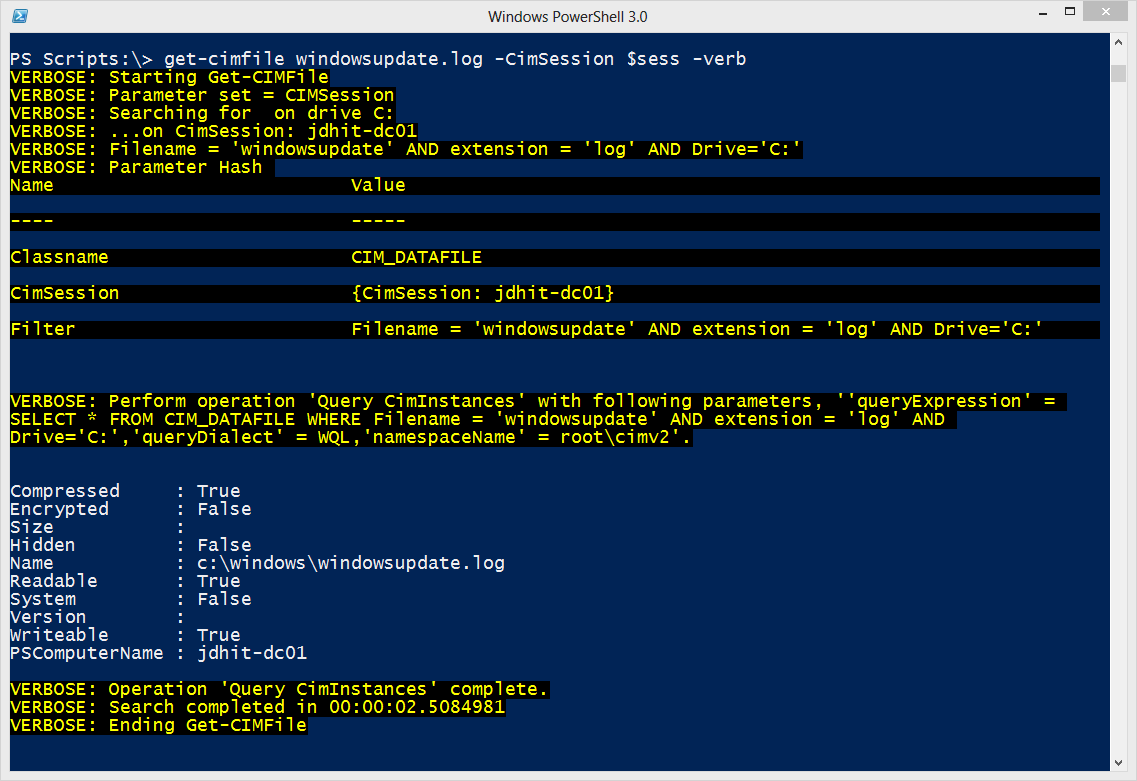

This command doesn't recognize carriage returns. If you specify /c and /n in the same command line, find ignores /n. If you use /c and /v in the same command line, this command displays a count of the lines that don't contain the specified string. Overall, PowerShell makes it easy to rename files quickly and efficiently, making it a valuable tool for anyone working with large numbers of files. To search for a string with wild cards and regex patterns, you can use the FINDSTR command.

In this guide, we explored the different ways to rename files using PowerShell, including renaming a single file, renaming multiple files in a folder, batch renaming files with PowerShell scripts, and renaming file extensions. Similarly, the -confirm Prompt for confirmation before executing the command.
Powershell find file by name windows#
This module installs a set of cmdlets to Windows PowerShell you run those cmdlets to set up single sign-on access to Azure AD and in turn to all of the cloud services you are subscribed to.
Powershell find file by name download#
It takes care of all the operations that are related to synchronize identity data between your on-premises environment and Azure AD. The Azure Active Directory Module for Windows PowerShell is a download for managing your organizations data in Azure AD. By default, Select-String finds the first match in each line and, for each match, it displays the file name, line number, and all text in the line containing the. You can use Select-String similar to grep in UNIX or findstr.exe in Windows. In the above PowerShell script, Get-ChildItem uses the parameter -Recurse to get one or more child items for the path specified and pipe output to. Get-ChildItem -Path D:\PowerShell\ -Recurse Select-String -Pattern 'PSIsContainer'. It also allows you to preview the changes before committing them using “-WhatIf” switch, which can be helpful in avoiding mistakes. The Azure Active Directory Connect synchronization services (Azure AD Connect sync) is a main component of Azure AD Connect. When joining multiple path elements you might find this easier: System.IO.Path::Combine(. The Select-String cmdlet uses regular expression matching to search for text patterns in input strings and files. Using the Select-String cmdlet in PowerShell with Get-ChildItem to search for the string in the file recursively. It allows you to use wildcard characters, and other advanced features to rename multiple files at once. to parse thru a text file that has all the server names and then runs sqlcmd. In conclusion, PowerShell can make time-consuming tasks like renaming your large batch of files much simpler and faster. In Powershell, everything is an object and string Check for known string in. Write-host "'$OldFile' does not exists!" -f Yellow NOTE: IM not looking to rename the files myself- I just need to be able to send a list to the folks who will be changing them. Write-host "'$OldFile' has been renamed to '$NewFile'" -f Green I have already dealt with the path issue, but am looking for a PowerShell method to identify files with illegal characters (such as &), and export the list to a CSV file. Rename-Item -Path $OldFile -NewName $NewFile


 0 kommentar(er)
0 kommentar(er)
